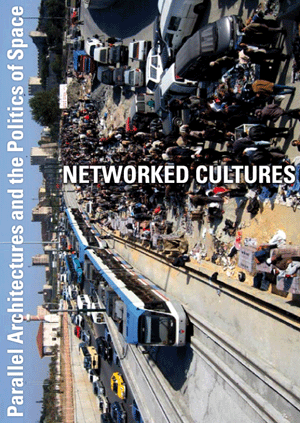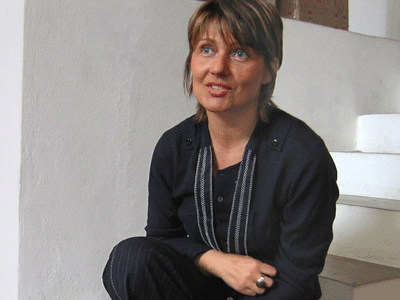_loginregistrieren_database_5 Factories - Worker Control in Venezuela Dario Azzellini & Oliver Ressler _ALMOSTREAL ECF _AnArchitektur Jesko Fezer _Arizona Road Azra Aksamija _Balkan Konsulat rotor _Bata-ville: We are not afraid of the future Nina Pope + Karen Guthrie / www.somewhere.org.uk _Black Benz Race krcf in collaboration with Felix Stalder, Arben Gecaj, Faton Topalli and Osman Osmani _Black Sea Files Ursula Biemann _Camp La Jolla Military ParkOwen Mundy _CHANGE REALITY: Renaming the Streets of Zagreb REINIGUNGSGESELLSCHAFT _Conceptual Paradise. There is a place for sophistication Stefan Roemer _de-regulation Irit Rogoff, Kutlug Ataman, Stefan Roemer_news ____________Bloomberg SPACE, London ____________Kumu Art Museum Tallinn ____________Open Space, Open Systems - Vienna ____________CAA 2011 Conference, New York ____________Forum Stadtpark, Graz ____________Symposium, Istanbul ____________lungomare, Bozen/Bolzano ____________Metropolis Biennale 2007-17, Copenhagen ____________new publication available now ____________Mestna Galerija, Ljubljana ____________Livestream of Networked Cultures documentary ____________ |
_ConversationsClaudia Zanfi
Claudia Zanfi
PM/HM: How does the network structure of aMAZElab and MAST (Museo di Arte Sociale e Territoriale) relate to specificities of the annual Going Public project and your interest in collaborating with communities within the realm of art? Claudia Zanfi: Going Public is a complex on-going project of reflection, research, creative production and cultural exchange that has established itself in an interdisciplinary area. The main subjects are mobility, migration, memory, borders, new geographies, Mediterranean countries, the Middle East and the public sphere. One of our central targets is to organise meetings between local people and international artists, architects, sociologists and writers, and let them work together. We started the project in Modena (Italy) for the International Festival of Philosophy in 2002. Since then we have invited artists to become “tutors” for local communities on a new issue each year; together they do research and develop visual works, which are then presented in public spaces and implemented in debates, film and video screenings, walks, seminars, etc. All this can be seen in our publications – which I don’t like to call catalogues – because they aren’t actually catalogues of an exhibition, as Going Public is not just an exhibition. It’s a real act of cultural activism, especially in how it confronts contemporary living and inhabiting cities. This is a very strong characteristic of Going Public: the title itself already refers to this quality, namely that of actively going out into the public domain. We started by using places and platforms of mobility: train stations, bus stations, gas stations – though not as “galleries” but as collaborative spaces where some of the workshops took place. For example, at the first edition of Going Public we had some banners put up by Multiplicity that questioned the city, and the relation between local and global. The banners were positioned as flags on the platforms of the main station and they formulated a set of questions. The people waiting for the trains could sit there, read the banners and start to think about these questions. They could enter into a kind of dialogue with the installation, one that had nothing to do with the aesthetic perception of an artwork. For example, one of the questions was “How is European space changing?” – and this is, of course, quite an important question to think about while travelling by train. PM/HM: The various editions of the Going Public project seem to cover Europe and the Mediterranean not only in a geographical sense but also in terms of cultural urgencies. In most cases, you have done this by moving outside the centre. How does this shift of attention reflect the changing geopolitical situation in Europe? Claudia Zanfi: In 2005 we were invited to Larissa (Greece), because they had heard about our Going Public projects. By the way, we really like the idea of our project growing like a seed, sprouting up here and there. So the new Larissa Contemporary Art Centre invited us to submit a project similar to that of Going Public, i.e. to work with local communities and in public spaces. Larissa is one of the least known cities in Greece, the only larger city not at the sea, located in northern Greece, not far from the Albanian and Macedonian borders. It’s a really ugly city that evolved without urban planning. But the most interesting cultural and political movements, for example, the trade union movement and the 1968 student movement started in Larissa. Initially we only planned a small edition of Going Public, entitled “Communities and Territories”, but it turned out to be huge. The aim was to focus on bordering territories and local communities, on migrations and the flux of people, on the activities of small communities living in Larissa, communities that came from the Balkans and eastern Europe (e.g. Roma, Vlachs, and refugees from Albania and Serbia) as well as Russia (Pontians) and Asia. We found the most peculiar things and attitudes there. For instance, the main military base for aircraft guarding Greek territory against the Turks is in Larissa. We were walking in the streets and talking while dozens of interceptor aircraft kept crossing the sky. All these intersections were very interesting for our work, for the research published in the book and for the artists invited, including Adrian Paci, Rirkrit Tiravanija, Maria Papadimitriou, Maya Bajevic, Pablo Leon de la Barra, Marjetica Potrc and others from Cyprus. We also invited Carlos Basualdo to a public debate, open to everyone in the city and the students of the University of Thessaly in Volos. We can call Larissa a “state of exception” as defined by Giorgio Agamben’s theory. It has more than 300,000 inhabitants, but there is no centre except for a very small historical one. It’s built in a very chaotic way; there are many “satellites” in the sense that every community has its own circular neighbourhood. If you draw lots of circles or bubbles, then you have a map of Larissa. It’s not a gated city in terms of urban fabric, but it’s one in social terms. There are many different communities of migrants. Greece is in the middle of this huge migratory movement between the East and West, especially in relation to the Balkans. Due to the war in the Balkans, the fall of the Berlin Wall, the collapse of communism and the situation in post-communist societies, Greece has become a route for different migrating groups. Once people migrated to Russia and Ukraine, and other communist countries; after 1989 these same people had to leave again. This double flux led to gated communities inside the city. For example, there is a very interesting case near Larissa: the community in Farkadona. It’s made up of Greeks who lived for almost thirty years in Russia; they returned to Greece but still speak only Russian with one another. After fifteen years in Farkadona, this community of Pontian Greeks still lives in two-hundred iron containers, twenty-five square metres per family, and every year the municipality promises to give them real homes. PM/HM: Such projects can be very successful within a kind of international discourse, but how do they affect local circumstances, and in particular the communities involved? Claudia Zanfi: Well, take the Farkadona community we were just talking about. A team founded by Hariklia Hari (who is an architect) was involved in our Going Public project. For it, the team started doing important research on the Pontian Greeks and organised legal demonstrations against the municipal authorities, programmes for housing and a community newspaper called The Argonaut News. Such activities don’t involve the kind of research where you can maintain distance. We’re not biologists or scientists; first and foremost we work with human beings. By practising visual art and contemporary culture, we talk to people and activate a dialogue. The project in Farkadona was very important, because it motivated the community to come out of limbo and raised its self-awareness. Prior to the project, the leader of the community rarely visited the municipal authorities to say, in the name of the community, “we’re fed up with having to live in containers”, and nothing ever happened. Then they started a newspaper together with the lead artist and of course a newspaper is a voice, so thanks to it they were able to make themselves heard. They also took up residence in the radio stations of the cities of Farkadona and Larissa, which meant they had an even stronger voice with which to reach the public. This is when things started to change. Of course, this doesn’t happen in every case and every community, but if we obtain even one result like this one, we feel that the project makes sense, that it’s successful, not only in the artistic community, but also in society, and that’s important to us.
|
_broadcasts_conversations+ Ana Dzokic and Marc Neelen+ Ayreen Anastas and Rene Gabri + atelier d'architecture autogérée (aaa) + Asya Filippova + Sophie Hope and Sarah Carrington + Branca Curcic + Christoph Schaefer + Campement Urbain + Claudia Zanfi + Despoina Sevasti and Poka-Yio + Erden Kosova + Helmut Batista _textsRadio as Spatial Practiceby: Paulo Tavares Survival Kits: Artistic Responses to Globalizationby: Marga van Mechelen What Ever Happened to Cultural Democracy?by: Sophie Hope I don't know how to explain ...by: Anca Gyemant Trading Placesby: Peter Moertenboeck & Helge Mooshammer Milosevic as Architectby: Srdjan Jovanovic Weiss When the Unavoidable Knocks at the Door ...by: Gulsen Bal Tracing Translocality: The BlackBenz Raceby: Felix Stalder travelling lexicon towards a global positioning systemby: Celine Condorelli |
